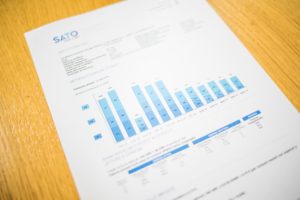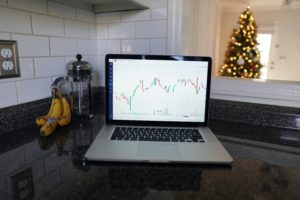Foreword
In previous articles, I have mentioned that the Securities and Exchange Commission (SEC), an independent agency of the U.S federal government, has introduced various policies to avoid stocks being pumped or dumped. However, we did not go through these policies yet. Therefore, in this article, I will walk you through what they are, and also give you some examples about them.
What is a Trading halt?
A trading halt freezes all trading activity of a security or all security for a certain period depends on the reason for the halt. You can check the reason for the halt and the related halt code on the Nasdaq trader website. There are numerous reasons and related halt codes for trading halts nowadays, such as T1, T12, T5 halt, and more. Their halting time varies. Some of them could stop security from being traded for 5 min, and some could be a day, even a month to a year.
Common Trading halt for stocks
Trading of stock could be halted from time to time due to different reasons. It could be a scary thing since you are not allowed to buy or sell any shares when a stock is halted. However, if you know the reason for the halt, I believe you will not be such panic when you face it. In the following, I am going to walk you through some common trading halts, as well as some examples.
1. Market Wide Circuit Breaker (MWCB) halt

A Market Wide Circuit Breaker (MWCB) halt freezes ALL trading activity of securities in the market. It is a measure that the U.S. Securities and Exchange Commission (SEC) and the Financial Industry Regulatory Authority (FINRA) implement when the stock market crashes.
During the MWCB halt, all trading of national market securities would be halted. The halt would be triggered when there is a big decline in the S&P 500 index, an index that records the market capitalization changes of the largest 500 publicly traded companies in the U.S.
In other words, you will only see the MWCB halt when there is something happens that causes the Market Cap (Stock Price x Share Outstanding) of the largest 500 publicly traded companies in the U.S to drop significantly.
The MWCB halt time varies with different levels of S&P 500 index declination and different times.

2. News Pending halt (T-1)
T-1 news pending halt freezes the trading activity of a specific company’s stocks. The T-1 halt triggers when a company would like to release significant news (or materials) during the regular trading session.
Often, companies will release big news during the pre-market session or after-hour session. But sometimes, when something unexpected happens, for instance, their earnings leak before their scheduled announcement date, companies will send a request to the exchange for a T-1 halt. Then, they will formally announce the news by themselves.
Most of the time, the halt will take about an hour until the company has released the news. All trading activity of the company’s stock will then resume.
As a trader, all you need to know about the T-1 halt is the stock is halted due to news releasing by companies during the regular trading session. And you should be well-prepared for the resumption since the material released by the company could either be positive or negative and in most cases, the stock will resume at a different price due to the news announced.
3. Additional Information Requested by NASDAQ(T-12)
Additional information requested by NASDAQ (T-12) halt freezes the trading activity of a specific company’s stocks. The T-12 halt triggers once the Nasdaq exchange suspects unusual trading activities in a company’s stock.
Most of the time, significant changes in stock price are driven by good news, such as earning beater and more. However, sometimes you may see some companies’ stocks soars without any catalyst. For instance, DRYS stock price soared from around $5 per share to above $100 per share without any material released. These companies would then be asked to provide additional information to account for the move of their stock price.
The T-12 halt could last up to 10 trading days. Often, traders would exit their position as quickly as possible when there is no additional information provided by the company after the halt.
4. Limit Up Limit Down Halt (T-5)

Limit Up Limit Down (LULD) or Volatility halt (T-5) freezes the trading activity of a specific company’s stocks. The T-5 halt triggers when the stock price of a company spike or drop too fast (from the SEC perspective). Unlike the T-1 and T-12 halt, the T-5 halt triggers automatically.
The T-5 halt is the most common halt you will see in the stock market compared to other halts, especially when trading low-priced stocks. This halt is designed to prevent flash crashes of the market. And let traders having a 5-min break to stay away from the trading screen and do research of the company instead of chasing it.
The duration of the halt varies with the stock price and when it happens.
| Securities | Price Band Reference (9:30-9:45 am & 3:35-4:00 pm) | Price Band Reference (9:45 am-3:35pm) |
|---|---|---|
| *Tier 1 securities > $3.00 | 10% | 5% |
| ** Tier 2 NMS securities > $3.00 | 20% | 10% |
| Tier 2 NMS Securities ranged from $0.75 to $3.00 | 40% | 20% |
| Other stocks priced less than $0.75 | Lesser of 150% (upper limit only)or $0.30 | Lesser of 75% (upper limit only)or $0.15 |
Source @ Investopedia & Nasdaq Traders
Tier 1: All securities in S&P 500, the Russell 1000, and selected Exchange Traded Products (ETPs).
Tier 2: All National Market securities except rights and warrants. (All stocks other than stocks in S&P 500, the Russell 1000, and selected Exchange Traded Products )
Stocks will be halted for 5 to 10 minutes when it holds their price out of the band for 15 seconds. Once their price gets back into the band, the 15-second timer will stop. The bands will be doubled when the market opens and closes.
Calculating the reference price

To determine whether a stock is trading outside its band, you need to calculate its reference price, which is the average price of the previous five minutes.
| Steps | |
|---|---|
| 1️⃣ | Check the price band reference for the stock (5%? 10%? 20%?…) |
| 2️⃣ | Locate the 5 previous candles and find their average prices ((high+low)/2) |
| 3️⃣ | Sum up their average prices to get the total price of those 5 candles |
| 4️⃣ | Divide the total price by 5 to get the average price |
| 5️⃣ | Multiply the average price by (1*__%) to get the reference price |
(tips: take the average price of the middle of each candle could speed up your calculation)
Market after the LULD Halt

Often, the stock price will open at a different price after the resumption. From my experience, the opening price usually follows the previous trend. In other words, it will open higher after the halt if the stock price is originally spiking, vice versa. (Of course, there are exceptions)
Apart from the opening price, the volatility of the stock price will also tremendously increase after the halt. I guess the reason behind this is many orders are rushing in after the halt. Anyway, you should be much more cautious if you are trading after the halt.
(Little tips: Lowering your position size would help you to manage your risk better when the price is moving so fast)
Final Thought
Understanding trading halts is essential when you start learning how to trade stocks. In this article, I have walked you through various common halt types. Learn them all. So that you will know what you should do when you face a trading halt next time. You should also look at other trading halt types in case you see them when you are trading. Hope you find this article helpful.
[Next Lesson: Technical Analysis: Support & Resistance]





